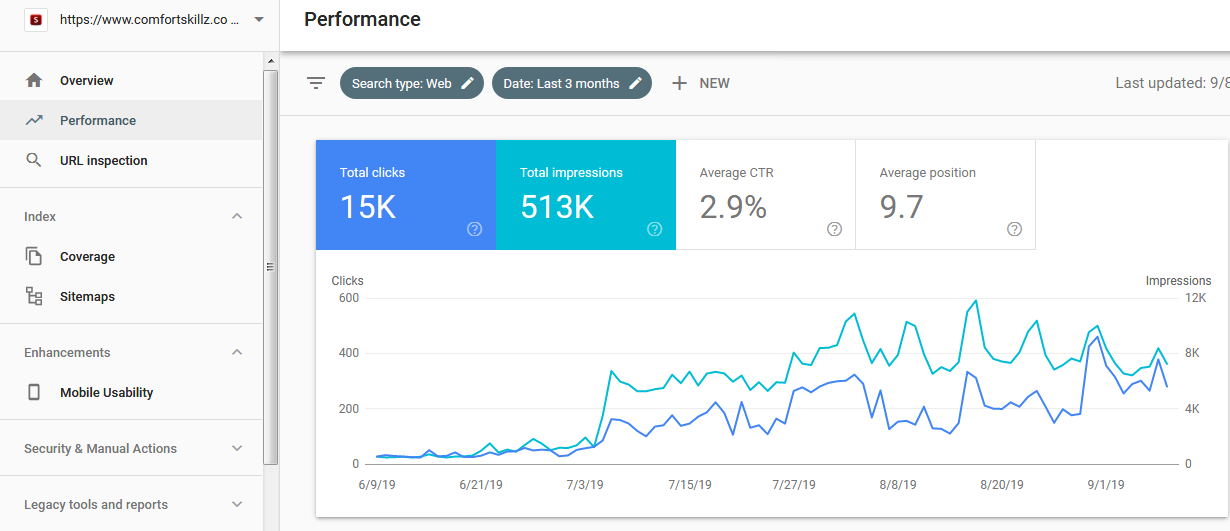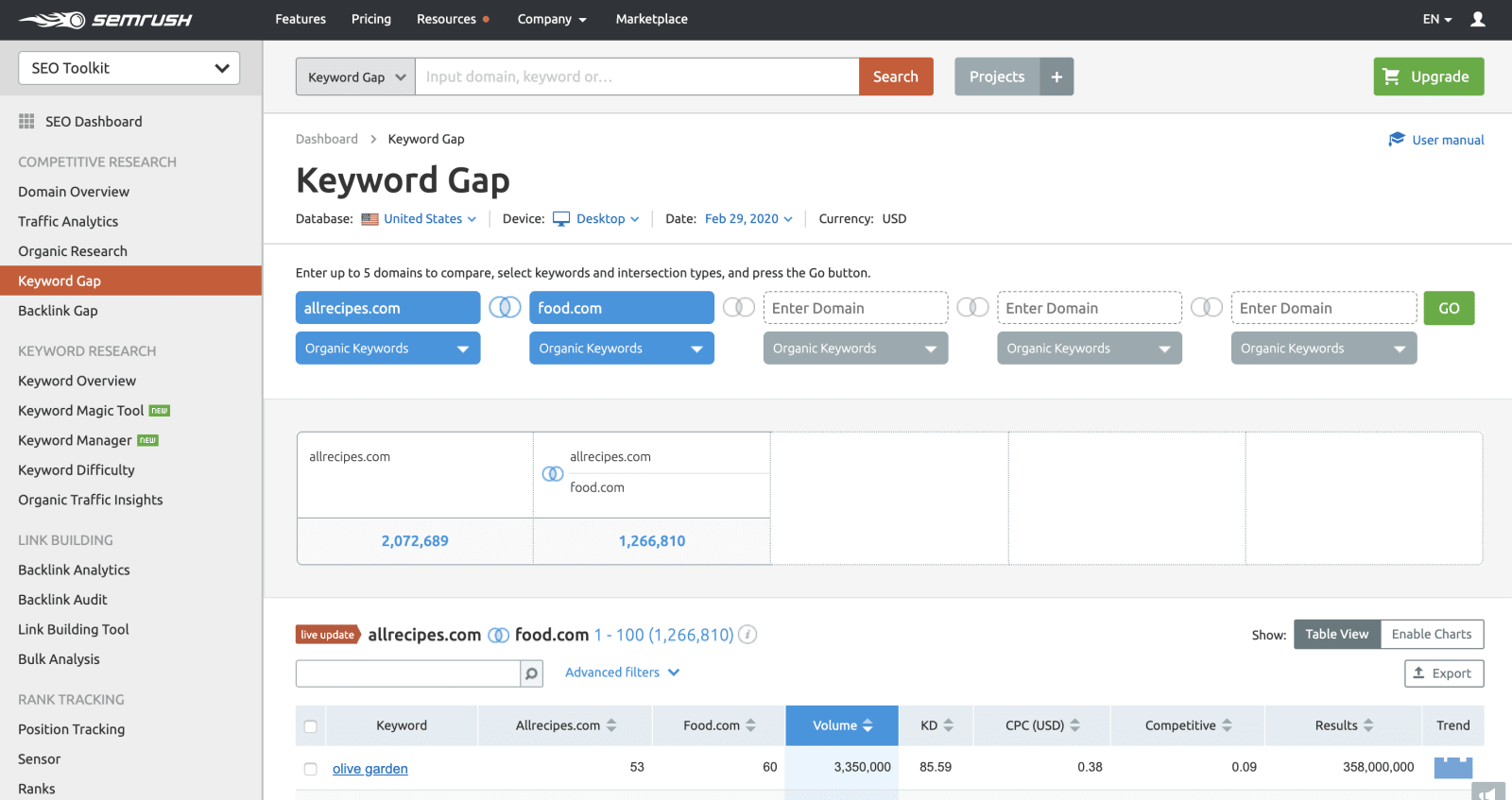
Sixty-eight percent of online experiences begin with a search engine. So if you want to make sure that your content is in the right place at the right time, you have to be thinking about SEO at every single stage of the content creation process.
SEO — or search engine optimization, for the uninitiated — is a marketing strategy designed to increase your content’s visibility and organic reach. It also helps ensure that your content ends up in front of the right audience.
Keyword and keyword research are a big part of SEO, and they’re usually what we think of first when the term comes up. But there are more ranking factors to be aware of, including the security, accessibility, and loading speed of your website, your content’s mobile-friendliness, and links, both internal and external.
In terms of content creation, being aware of SEO from the start is a good idea if you want to grow your reach and tap into a bigger audience. But don’t feel like you have to outsource your SEO. Where here to help you do it with a quick step-by-step guide for ensuring your content ranks.
Step 1: Ideate Your Content
SEO plays a big role in what you decide to write about.
Stick to topics that are relevant to your brand and that you have some presumed authority to speak on. Not only will this help your content perform better, but it will also help you connect with higher-quality prospects.
Build a mind map, starting with topics that speak to your brand’s core and then branching each of them out into subtopics. From there, head to keyword research or SEO tools like Ahrefs, SEMrush, or Answer the Public to generate keywords based on the topics and subtopics you identified. Use these keywords, phrases, and questions to guide your content and help inform what you should write about.
How to Find the Right Keywords
Research Your Customer Base
It’s true that when creating content with SEO in mind, the goal is to have it rank. However, you also want to make sure that the content you’re creating aligns with the needs of your customers.
When you know who your target audience is, you can conduct keyword research to identify the words and phrases they use when searching for information online. This information can help you optimize your content for relevant keywords and phrases.
When researching your customer base to create an SEO strategy, there are a few tips that can help you gather the information you need:
- Surveys can be an effective way to gather information about your audience’s demographics, interests, and preferences. You can use online tools like SurveyMonkey or Google Forms to create and distribute surveys to your audience.
- Your website analytics can provide valuable insights into your audience’s behavior, including the pages they visit, the time they spend on your site, and the actions they take. You can use tools like Google Analytics to analyze this data.
- Customer feedback can provide insights into the pain points and needs of your audience. You can gather feedback through social media channels, customer reviews, and customer service interactions.
- As mentioned earlier, conducting keyword research can help you identify the words and phrases your audience uses when searching for information online. This can provide valuable insights into their interests and needs.
- Social listening involves monitoring social media channels for mentions of your brand, competitors, or industry. This can provide insights into your audience’s preferences, challenges, and opinions.
Use Google Search Console
Google Search Console (GSC) can be a valuable tool for finding the right keywords for your SEO strategy.
When using Google Search Console, use the Performance Report and look into the queries section to see a list of the keywords that your website is ranking for in Google search results.
You can sort the list by clicks or impressions to see which keywords are driving the most traffic to your website. You can also click on a specific keyword to see which pages on your website are ranking for that keyword, as well as other metrics like impressions, clicks, and click-through rate. By using the filters option, you can refine your keyword research by date range, device type, location, and more.
By analyzing the keywords in GSC, you can identify which keywords are driving the most traffic to your website, as well as which keywords have the potential to drive more traffic with some optimization. You can also identify which pages are ranking for specific keywords, which can help you optimize those pages further to improve their rankings. Additionally, GSC can provide insights into which queries are leading to clicks on your website, which can help you tailor your content to better meet the needs of your audience.
Try the SEMRush Competitor Analysis
SEMrush’s competitor analysis feature can be a powerful tool for finding the right keywords for your SEO strategy.
You can use SEMrush to identify your main competitors in your industry, as well as see the top-performing pages on your competitor’s website, sorted by their estimated organic traffic.
Also, if you click on one of your competitor’s top-performing pages, you can see the list of keywords that page is ranking for. SEMrush will provide information on the search volume, keyword difficulty, and other metrics for each keyword.
SEMrush’s “Keyword Gap” tool to allows you to compare your website’s keywords to your competitor’s keywords. Enter your website URL and your competitor’s URL, and SEMrush will show you which keywords your competitor is ranking for that you are not.
Once you have identified the keywords that your competitors are ranking for, prioritize them based on search volume, relevance to your business, and keyword difficulty.
Prioritize Certain Keywords
When creating a list of keywords, the list can get long quickly. Instead of targeting all the keywords on your list, you’ll be more productive and successful if you prioritize your keywords based on a few criteria.
- Search volume: High search volume keywords are typically more competitive, so you may want to prioritize keywords with moderate search volume that are more targeted and specific to your business.
- Relevance: Prioritize keywords that are most relevant to your business and target audience. These keywords should align with the products or services you offer and should be used in the content on your website.
- Competition: Keywords with high competition may be more difficult to rank for, so you may want to prioritize keywords with a lower competition that are still relevant to your business.
- Conversion potential: Some keywords may be more likely to drive conversions, such as keywords that include a call-to-action or target users who are further down the sales funnel. These keywords should be prioritized over others that may drive traffic but have a lower likelihood of converting.
- Cost: If you are running a paid search campaign, prioritize keywords that are more cost-effective and have a higher return on investment.
- Trends: Stay up-to-date with the latest trends in your industry and prioritize keywords that are currently popular or trending. This can help you stay ahead of the competition and attract new customers.
Try the SEMRush Competitor Analysis
SEMrush’s competitor analysis feature can be a powerful tool for finding the right keywords for your SEO strategy.
You can use SEMrush to identify your main competitors in your industry, as well as see the top-performing pages on your competitor’s website, sorted by their estimated organic traffic.
Step 2: Outline Your Content
If you’re regularly creating content, chances are you’re already putting together outlines to guide each article. However, make sure that you’re including basic SEO components you’re looking for in your outline, which will inform the writer and keep everyone on the same page regarding focus.
At Benchmark, we like to include a suggested title, a couple of sentences, or a paragraph on what the content is about and any key points the article should touch on. Complete the outline with any keywords or phrases that need to be included, and if you have a focus keyword you’re trying to rank for, be sure to mention that. Also include other internal articles that could be linked to. This helps boost your SEO by facilitating an internal linking strategy, which also helps guide readers to other important, related pages on your site.
Step 3: Write Your Content
If you’re doing the writing yourself, SEO will be integral to the process.
In addition to staying on topic, you’ll want to strategically place keywords throughout your copy to optimize it for search. Put a high-priority keyword in your header, and work that keyword and any additional keywords into subheaders and the text itself. Consider not just what people search but how they search it, making your keywords more conversational than robotic to be in line with the surge in voice search.
Links are important. Try to stick as many applicable, high-quality internal links as possible and at least one link to a high-authority external site (make sure it’s non-competing). As you write more content, you can create pillar posts, which include a lot of internal links and are great for SEO. These pages are typically more in-depth and thorough, therefore longer-form.
If instead of writing your content, you’re using AI-content generating tools, like ChatGPT, there are prompts you can provide that can keep your content target to your keywords. Try prompting with your outline, but make sure to review the final result carefully. You’ll want to edit it and tweak it to ensure your keywords are used appropriately.
Lastly, make sure that your content is easy to read and actionable. This is more valuable for your readers and search engines like it too.
Step 4: Tweak Your Content
Keep SEO front of mind as you edit your content before publication. Verify that the piece is well-written, original, and on topic, and check that your keywords and links are in place.
Search engines love graphics, so work some original images or videos into your content if you can (or just use stock photos). Add an alt-text description to all graphics for both SEO and user accessibility, and go ahead and stick a keyword in there, too, if you can.
Make sure that you have a meta description in mind or already written. Your meta description will need to be concise and use the keywords you established.
Step 5: Distribute Your Content
Following the steps above means that your content will be optimized for organic reach, though it might not happen right away.
In the meantime, take action to distribute your content in a targeted, effective way. Use it in email marketing, sending it out to segmented contact lists depending on which leads will find it most relevant to their current needs. Share your content on your social media pages, too, paying attention to what sorts of pieces resonate most with your followers and spur on the most engagement.
Content isn’t the only part of your SEO strategy, but it is a big part of it. Keep a close eye on how your content is performing and update and/or modify existing pieces as needed to improve their ranking.
As your content requirements grow, go back to step one and your mind map and go through the process again. Regardless of your industry, there are always a wealth of topics, ideas, and keywords that may be relevant to your audience — you just have to figure out what they are (and utilize them correctly).









